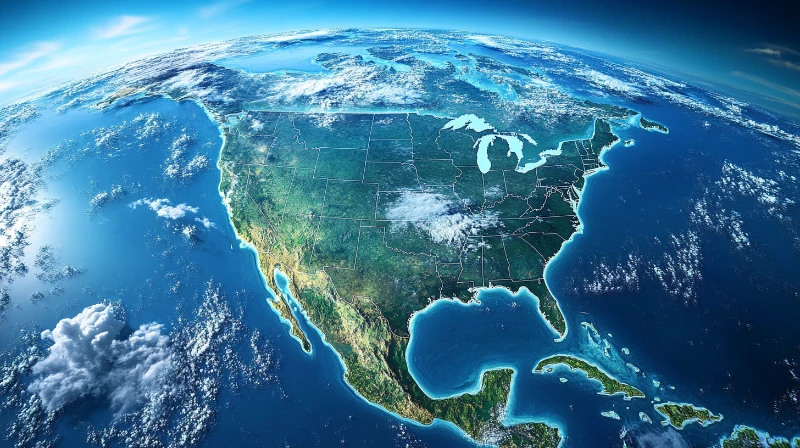India and the United States (US) are located on opposite sides of the globe, leading to a significant time difference. Understanding this difference is essential for communication, business, travel, and cultural exchanges. In this blog, we will explore the time zones of both countries, why time zones exist, and how the Earth’s rotation creates varying times around the world.
Why Do Time Zones Exist?
The Earth rotates on its axis, completing one full spin in 24 hours. This rotation divides the planet into 24 time zones, each covering 15 degrees of longitude. As the Earth spins, different parts experience sunrise, noon, and sunset at different times.
India uses a single time zone called Indian Standard Time (IST), which is based on a longitude of 82.5°E. On the other hand, the US has six official time zones to cover its vast geographical area.
Time Zones in India
India operates on IST (Indian Standard Time), which is UTC+5:30. This means that India is 5 hours and 30 minutes ahead of Coordinated Universal Time (UTC).
Time Zones in the United States
The United States spans six main time zones:
- Hawaii Standard Time (HST) – UTC-10:00
- Alaska Standard Time (AKST) – UTC-9:00
- Pacific Standard Time (PST) – UTC-8:00
- Mountain Standard Time (MST) – UTC-7:00
- Central Standard Time (CST) – UTC-6:00
- Eastern Standard Time (EST) – UTC-5:00
During Daylight Saving Time (DST), these zones move one hour forward, except for Arizona (MST) and Hawaii (HST), which do not observe DST.
Comparing IST With US Time Zones
The time difference between IST and the US time zones varies:
- Eastern Time Zone (EST/EDT): IST is 10 hours and 30 minutes ahead of EST. Example: If it’s 8:00 AM in New York, it’s 6:30 PM in India.
- Central Time Zone (CST/CDT): IST is 11 hours and 30 minutes ahead of CST. Example: If it’s 7:00 AM in Chicago, it’s 6:30 PM in India.
- Mountain Time Zone (MST/MDT): IST is 12 hours and 30 minutes ahead of MST. Example: If it’s 6:00 AM in Denver, it’s 6:30 PM in India.
- Pacific Time Zone (PST/PDT): IST is 13 hours and 30 minutes ahead of PST. Example: If it’s 5:00 AM in Los Angeles, it’s 6:30 PM in India.
- Alaska Time Zone (AKST/AKDT): IST is 14 hours and 30 minutes ahead of AKST. Example: If it’s 4:00 AM in Anchorage, it’s 6:30 PM in India.
- Hawaii Time Zone (HST): IST is 15 hours and 30 minutes ahead of HST. Example: If it’s 3:00 AM in Honolulu, it’s 6:30 PM in India.
Why Is There a Time Difference?
Earth’s Rotation: The Earth rotates from west to east, causing the Sun to rise in the east and set in the west. Countries to the east experience sunrise earlier than those to the west. India, located east of the US, sees the Sun earlier in the day, making it ahead in time.
Latitude and Longitude: Time zones are defined by longitudinal divisions. Since India and the US are separated by several longitudes, their local times differ significantly.
Impact of Daylight Saving Time: In the US, most states adjust their clocks forward by one hour during summer months for DST, which affects the time difference with India. For example, during DST, IST is 9 hours and 30 minutes ahead of EST instead of 10 hours and 30 minutes.
Conclusion
The time difference between India and the US is a result of Earth’s rotation and geographical location. While it may seem complex, understanding it can improve communication and planning.


Comments (0)
Sign in to comment
Report